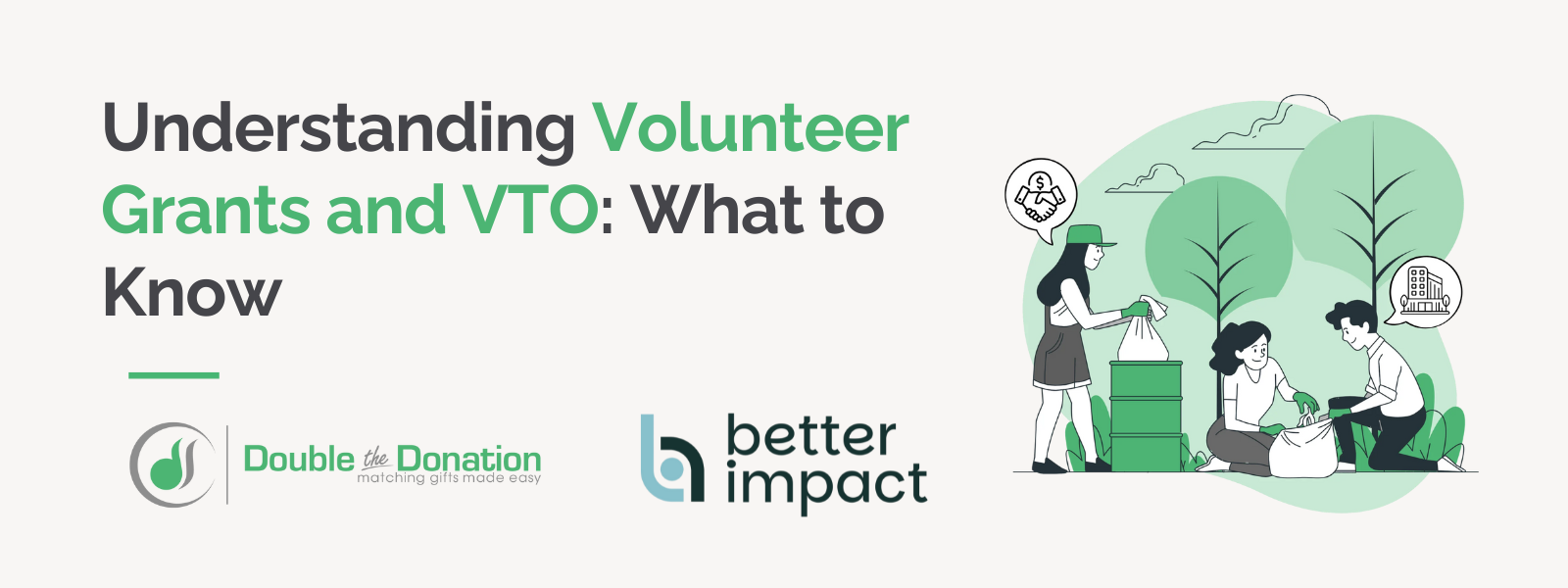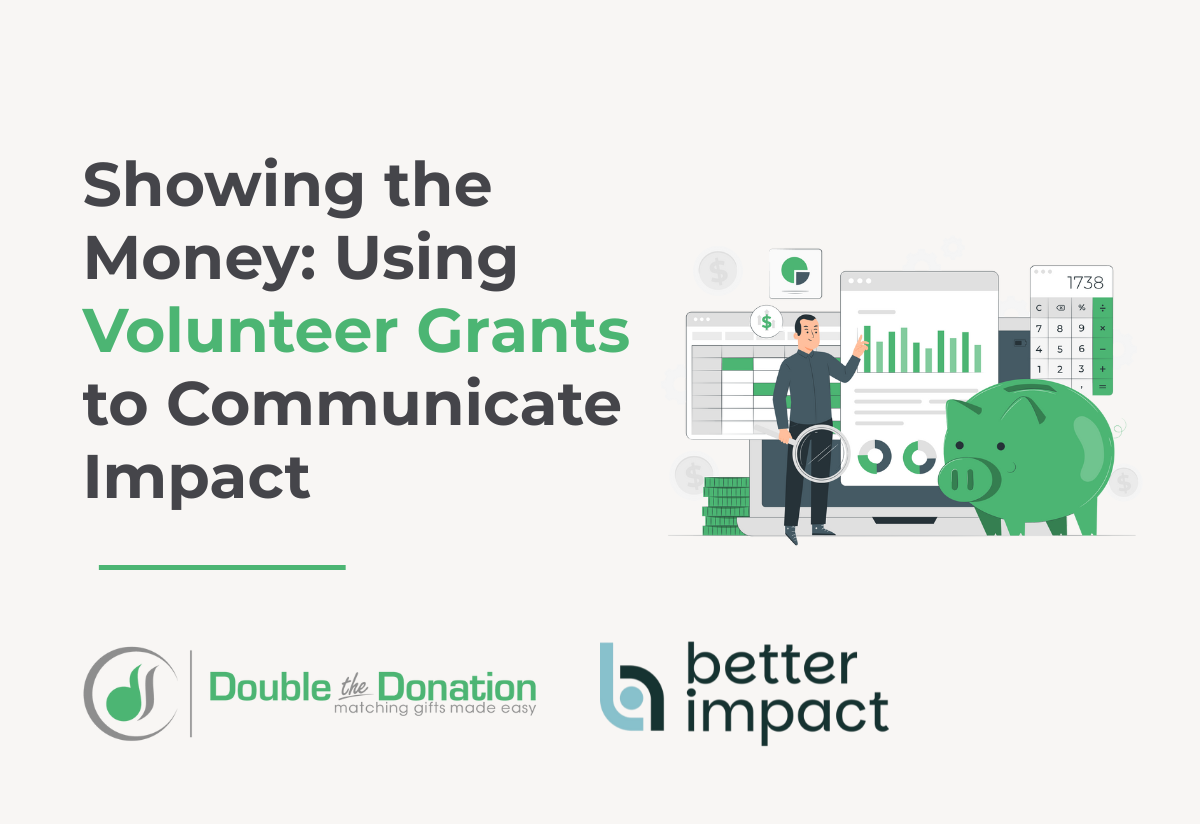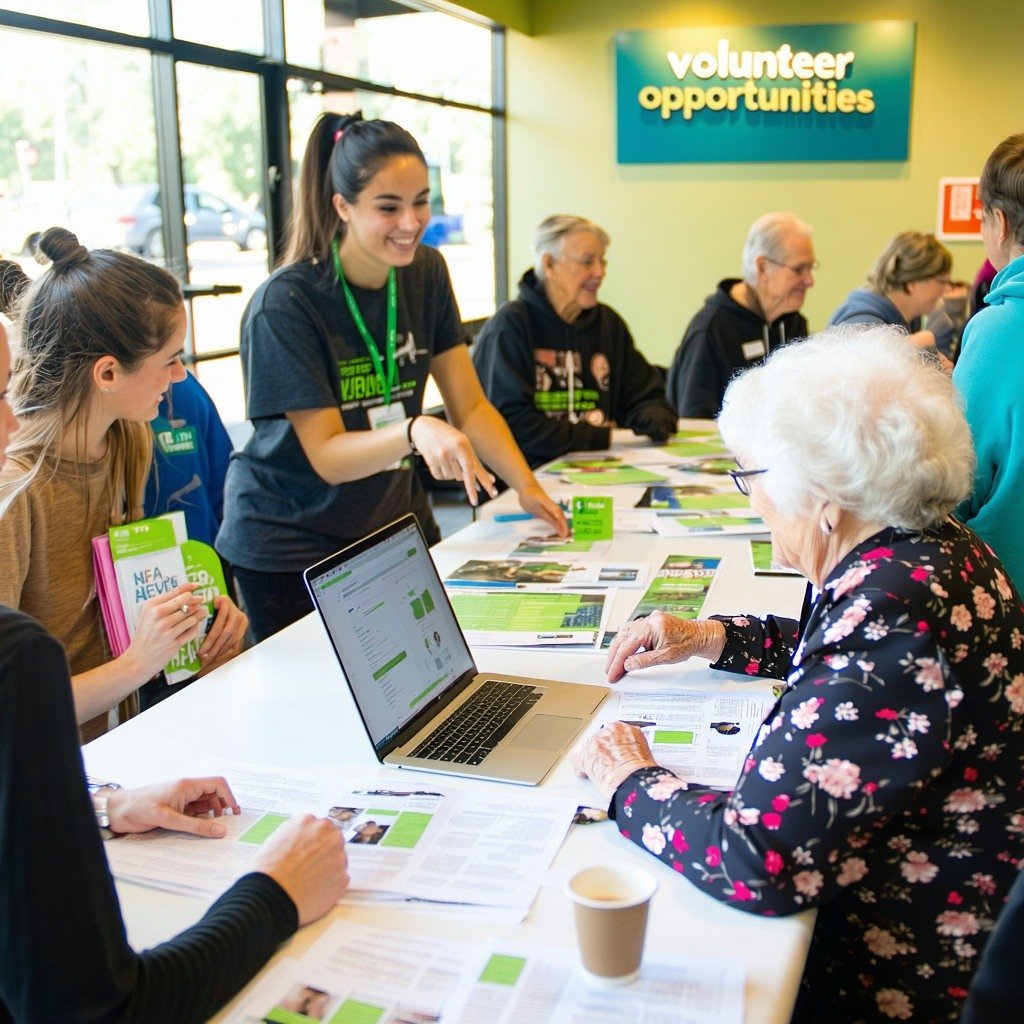Showing the Money: Using Volunteer Grants to Communicate Impact
Volunteers are often the unsung backbone of nonprofit operations, doing essential work behind the scenes. But how do you bring that value to the...
3 min read
![]() Double the Donation Team
Aug 27, 2025 9:00:00 AM
Double the Donation Team
Aug 27, 2025 9:00:00 AM

In the realm of volunteer management, programs like volunteer grants and Volunteer Time Off (VTO) are becoming increasingly significant. These initiatives not only enhance employee engagement but also provide nonprofits with essential resources to further their missions.
In this guide, we will explore the fundamentals of volunteer grants and VTO, their benefits, and how nonprofits can effectively leverage these opportunities.
Volunteer grants, also known as volunteer matching grants, are financial contributions made by companies to nonprofit organizations where their employees volunteer. These grants are typically awarded based on the number of hours an employee dedicates to volunteering, with companies matching the value of those hours with a monetary donation.
The process of volunteer grants is straightforward yet impactful. Here’s how it generally works:
Volunteer grants offer numerous advantages for both employees and the nonprofits they support. These include:
Volunteer Time Off (or VTO), on the other hand, is a type of policy that allows employees to take paid time off from work to engage in volunteer activities. This initiative encourages employees to participate in community service during work hours, allowing them to maintain their income without sacrificing regular time off.
VTO policies vary by company, but they generally include the following components:
VTO programs provide significant benefits for both employees and nonprofits. These include:
Nonprofits can maximize the benefits of volunteer grants and VTO by implementing strategic approaches. Check out a few of our expert-backed best practices to get started:
Establishing strong partnerships with businesses in your network can lead to increased volunteer support and funding. For the best results, nonprofits should:
Organizations should actively promote their volunteer opportunities to attract corporate volunteers. This can be achieved by:
Many employees are unaware of their company’s volunteer grant programs. Nonprofits can help by:
While volunteer grants and VTO programs offer numerous benefits for nonprofits, there are challenges that organizations like yours should be aware of. These include:
Each company generally establishes its own policies regarding volunteer grants and VTO. As a result, nonprofits must:
Accurate tracking of volunteer hours is essential for securing grants. As a result, nonprofits should promote effective volunteer tracking by:
Maintaining engagement with volunteers after events can be challenging. In order to overcome this roadblock, nonprofits can:
Overall, volunteer grants and VTO programs represent powerful tools for nonprofits seeking to enhance their funding and community engagement. By understanding these initiatives and implementing effective strategies for pursuing them, nonprofits can unlock new opportunities for support and strengthen their impact in the communities they serve.
As the landscape of corporate philanthropy continues to evolve, staying informed and proactive will be key to maximizing these valuable resources. Not to mention, equipping your supporters with the right tools—such as a volunteer database with information on the programs and a volunteer management software to facilitate effective engagement—can go a long way.
Featured Posts

Volunteers are often the unsung backbone of nonprofit operations, doing essential work behind the scenes. But how do you bring that value to the...

In a world where technology is intertwined into almost every aspect of our lives, volunteering is no exception. Technology has drastically changed...

We talk a lot about burnout in the nonprofit sector, and burnout is especially common among volunteer engagement professionals. According to a 2017...